
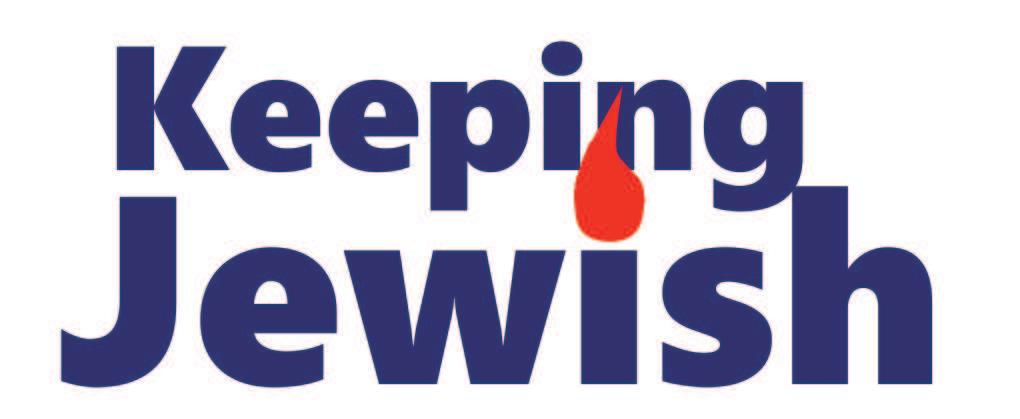
and
· January 2023 - Teves 5783 ·
BS”D PROFESSOR'S UNLIKELY ASCENT Samuel Yalkowsky triumphed over dyslexia to develop Zanax and mentor pharmacists Bark in heaven? 18 common questions about pets and Judaism Welcome to town Media expert Anat Balint Anat Balint is into yoga and tomatoes is yoga and tomatoes Jewish noodles A family recipe for savory lokshen kugel Window miracle The holiday celebrated only in the city of Hebron Hebron Bark in heaven? 18 common questions about pets and Judaism Welcome to town Media expert Anat Balint Anat Balint is into yoga and tomatoes is yoga and tomatoes Jewish noodles A family recipe for savory lokshen kugel Window miracle
holiday celebrated only in the city of Hebron Hebron
Tradition, Inspiration
Celebration
Published by Chabad Tucson
The
OPINION
and
network of Southern Arizona 2443 E 4th Street, Tucson, AZ 85719
EXECUTIVE DIRECTOR
Rabbi Yossie Shemtov
REBBETZIN
Chanie Shemtov
OUTREACH DIRECTOR
Rabbi Yehuda Ceitlin
PROGRAM DIRECTOR
Feigie Ceitlin
Affiliates: Congregation Young Israel, Chabad at the University of Arizona, Chabad on River, Chabad of Oro Valley, Chabad of Sierra Vista, Chabad of Vail and Lamplighter Chabad Day School of Tucson
EDITOR Rabbi Yehuda Ceitlin
COPY EDITOR Suzanne Cummins
CONTRIBUTING WRITERS
Feigie Ceitlin, Menachem Posner, Mordechai Schmutter, Jenny Shain, Yerachmiel Tilles and Benjamin Weiss
PHOTOS
RODNAE Productions
SPECIAL THANKS Chabad.org
EDITORIAL INQUIRIES OR ADVERTISING
Phone: 520-955-9680 Email: info@ChabadTucson.com
Keeping Jewish is published in print periodically by Chabad Tucson and is distributed free in Tucson and around Southern Arizona

Chabad Tucson does not endorse the people, establishments, products or services reported about or advertised in Keeping Jewish unless specifically noted. The acceptance of advertising in Keeping Jewish does not constitute a recommendation, approval, or other representation of the quality of products or services, or the credibility of any claims made by advertisers, including, but not limited to, the kashrus of advertised food products. The use of any products or services advertised in Keeping Jewish is solely at the user’s risk and Chabad Tucson accepts no responsibility or liability in connection therewith.
Note: “G-d” and “L-rd” are written with a hyphen instead of an “o .”This is one way we accord reverence to the sacred divine name. This also reminds us that, even as we seek G-d, He transcends any human effort to describe His reality.
While our family was searching for a new home in Tucson a few years ago, a unique house came on the market. It had belonged to an Arizona Superior Court judge, and a neighbor mentioned to us that visitors to the home had included U.S. Supreme Court Justices Stephen Breyer and Ruth Bader Ginsburg, and U.S. Senator Ted Kennedy.
But that isn’t what drew us to the house. What caught our eye was a wall-to-wall cherry wood bookcase, complete with a sliding library ladder and built-in tracks to access the highest shelves. We assumed that its previous owners (he was a judge, she was a county attorney) had filled the shelves with their library of legal tomes.
As soon as we moved in, that majestic bookcase was immediately filled with close to 800 of our books. With boxes and boxes yet to unpack, we reassembled our old bookcases from our previous home and placed them in other rooms. These too, were soon filled to capacity.
So we called a carpenter to discuss options: where else could we build more bookcases? When he walked through our home, his first reaction was, “did you read all of these books?”
It was a good question. Most of our books are what are called “seforim,” sacred
The judge’s fine cherry-wood bookshelf
By Rabbi Yehuda Ceitlin
Jewish volumes spanning millennia of scholarly thought, teaching and debate. There are books of the Torah and the oral tradition that was passed down along with it. There is a stately set of the Babylonian Talmud, lined near volumes on philosophy, mysticism and charming Chassidic tales. And on and on and on.
Ideally, I should know them all. Jewish people have been referred to as “the people of the book,” and literacy, writing, and study have been Jewish values for as long as we have been a nation. The Jewish people have always perceived education not only as a universal right but as a sacred obligation.
What I told the curious carpenter was that as diligently as I try to make a dent in our library, I’m far from reading all of the books contained in it.
So why shell out for bookcases — and for books I may never fully read?
For one, a home with books is a home with a passion for knowledge. As the American writer Mark Twain said, “In a good bookroom, you feel in some mysterious way that you are absorbing the wisdom contained in all the books through your skin, without even opening them.”
And the sacred texts don’t just share wisdom. They tell us the story of our
humanity and our faith. They bear testimony to our tradition, to our continuity as a people against all odds. And they inspire us to follow in the footsteps of those who came before us.
The story is told that the son of Rabbi Pinchas Shapiro of Koretz in Galicia, once wanted to loan a book to a man seeking to learn. Searching for a book that wasn’t frequently used, he reached for the Guide for the Perplexed by the Jewish philosopher Maimonides (Rambam). His father was quick to stop him. “The books of Maimonides, when they are in a home, bring about an awe of Heaven (yiras shamayim),” compelling its inhabitants to refrain from sin.
That cherry wood built-in is more than just a receptacle for books. It is a piece of home decor that embodies both wisdom and spirituality. And that is why I’m not quick to get rid of a book just because I didn’t get around to reading it yet. That day will still come, and until then, their presence is a blessing.
- Rabbi Yehuda Ceitlin is the Outreach Director of Chabad Tucson. Beginning Tuesday, January 29, he will present a six-part course titled “Book Smart - Judaism’s Most Important Titles” at the Tucson JCC and on Zoom. For more, visit, ChabadTucson.com/JLI

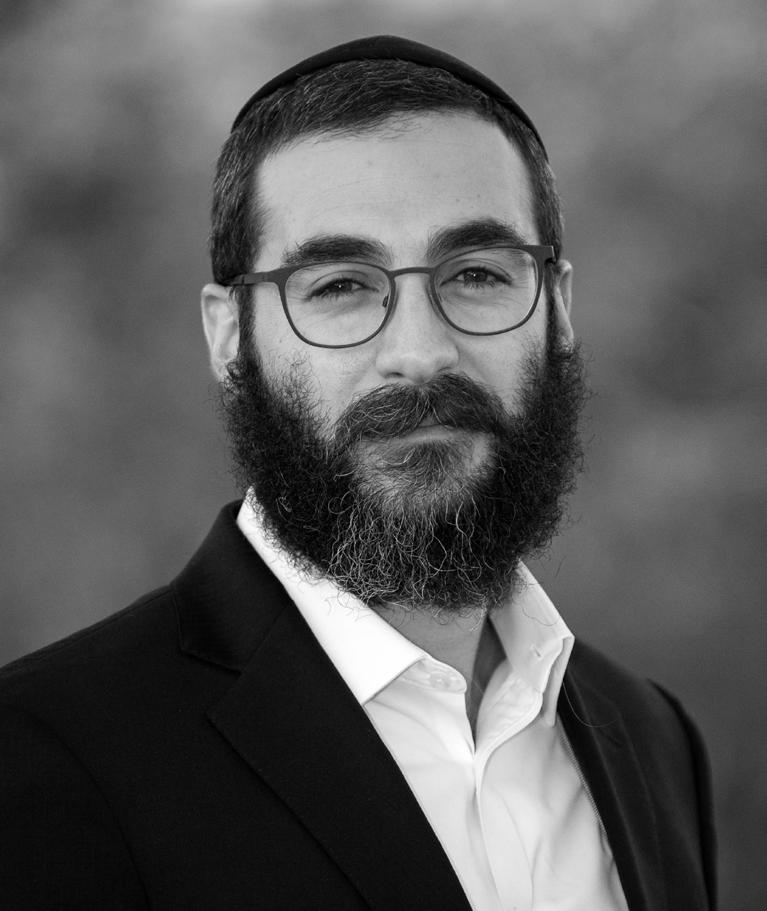
| January 2023 | Keeping Jewish
The Jewish outreach
education
2
And there was light
Chanukah was celebrated across Southern Arizona with public Menorah lightings and celebrations








Keeping Jewish | January 2023 | NEWS
Rabbi Yossie Shemtov speaks at Chabad Tucson’s tallest Menorah lighting in Downtown Tucson
A firefighter of the Golder Ranch Fire District drops chocolate coins at Chabad of Oro Valley’s Chanukah event
Isaac Wheeler lights the Menorah of Chabad of Vail and the Vail Preservation Society
Eileen Neiman, Sandy Lindblad, Carol Margolis, Renee Rhyner and Luis Ruiz light candles at a JLI class at the Tucson JCC
A crowd gathered outside the Casa Grande City Hall for a Menorah lighting led by Rabbi Moshe Sasonkin
Jennifer Tougas and the crowd at one the nightly lightings of the Menorah at the Tubac Presidio State Historic Park
Students of Lamplighter Chabad Day of School of Tucson dance at an independent living community
3
Live music is played at Chabad of Sierra Vista’s event at the Veterans Memorial Park
PROFESSOR'S UNLIKELY ASCENT
At the age of 80 and in good health, Samuel Yalkowsky is in a position to kick back and enjoy leisure time, perhaps on a cruise or even a safari. Instead, he walks to pick up a coffee and goes to work at the R. Ken Coit College of Pharmacy at the University of Arizona.
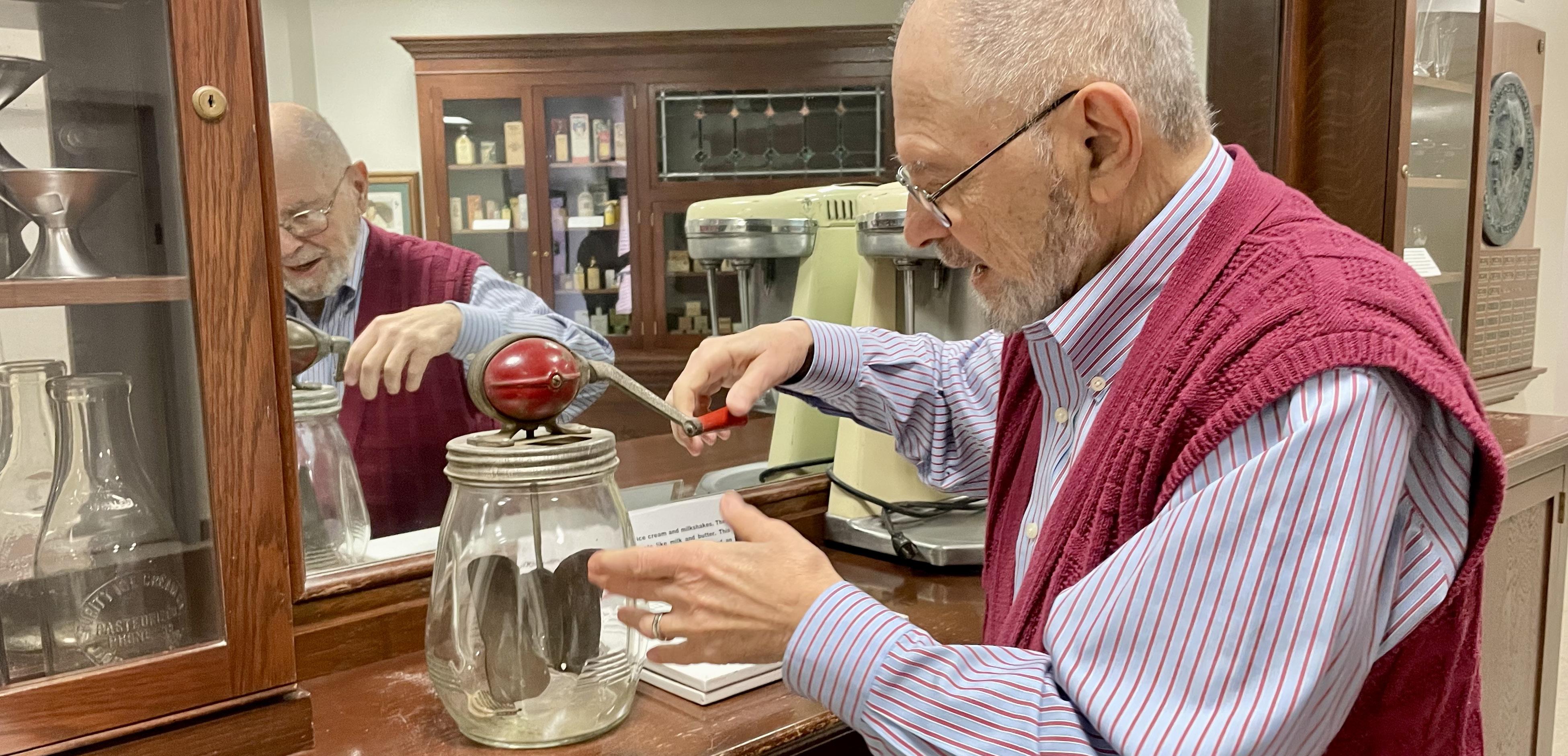
He begins the day at the independent living community Villa Hermosa, where he moved in after the passing of his wife over a year ago, just shy of their 60th wedding anniversary. He then drives to work.
There’s a prime parking spot waiting for him at the corner closest to the building. “The night guard parks there and once he leaves at 9 AM, everybody else has already parked and is at work. So when I come at 11 AM, it’s empty and available.”
He has had a long and distinguished career as a pharmaceutical scientist, first in the medical industry for 13 years, then 40 years in academia. He has authored
By Benjamin Weiss
six books and 280 papers and holds six patents.
His intuition and ingenuity can be given much of the credit for his success. “I played out my life largely by ear and I have been lucky,” he says, sitting at a gray vintage steel tanker desk. His small office on the 4th floor, surrounded by books, papers and photos, is where he feels at home. “This is my happy place,” he comments with a smile.
His ascent is an unlikely one by all accounts.
He was born in 1942 in the Bronx borough of New York City. His father Morris, a house painter, immigrated from the Russian Empire at the age of 14 to escape antisemitic Cossacks. His mother Anna was born in the U.S. to parents from Eastern Europe.
He was a mediocre student at Public School 48 in the Bronx. When he applied to Stuyvesant High School, his application was rejected until his older brother Stanly intervened. “He was their football running back and he got me in the next year,” Yalkowsky recalls.
“I was a lousy student,” he admits. “My report card would always say something like ‘does satisfactory work. Could do better,’ and I was fine with that. What I had was dyslexia, although I had never heard the word at the time.”
His low scores didn’t help when he was caught selling illegal fireworks on school grounds. “I was called to the dean’s office and was kicked out,” he recalls. “They also called the police. The first officers were friendly but at the station, there was a crazy officer who pulled out a gun and challenged me to grab it off the table before he did. I was really scared.”
He continued to Columbus High School when he saw an ad in the newspaper titled “Try Pharmacy.” As he liked to organize and arrange things, it seemed like a good fit for him and he enrolled in Columbia’s College of Pharmacy on 68th Street.
The weekend before school ended, he went to a friend’s party and met Linda Mandel (originally, Mendelblatt). “We talked but didn’t like each other,” he recalls, “but when I returned home, I inexplicably told my mother I thought I met the girl I would marry. I later called her and asked her to a school ball because hers was the only phone number I had. We got to know each other better and started dating.
“She was from Queens from a middle-class Jewish family like ours,” he says. “But her relatives were upper-class and her parents felt like my family wasn’t good enough for them. They forbade her to see me, so she moved out of the house to live with her brother and sister-in-law so she could continue seeing me.”
| January 2023 | Keeping Jewish PROFILE
4
Jennifer Tougas and the new Menorah at the Tubac Presidio State Historic Park
Samuel Yalkowsly triumphed over dyslexia to develop Zanax and mentor pharmacists
Eventually, her parents took a liking to him and the couple got married. They were blessed with two daughters, Naomi and Rochelle.
At Columbia, Yalkowsky received a C grade from his professor George Zografi and dropped out of the class. Yalkowsky later applied to graduate school at the University of Michigan to find that Zolgrafi was then on the faculty there. He was surprised that Zolgrafi accepted his application, thereby launching Yalkowsky’s brilliant career.

Yalkowsky went on to develop the formulation of several pharmaceutical products, including Halcion tablets and Xanax tablets. He engaged in research and won the prestigious Ebert Prize from the American Pharmacists Association for best contributions to the Journal of Pharmaceutical Sciences.
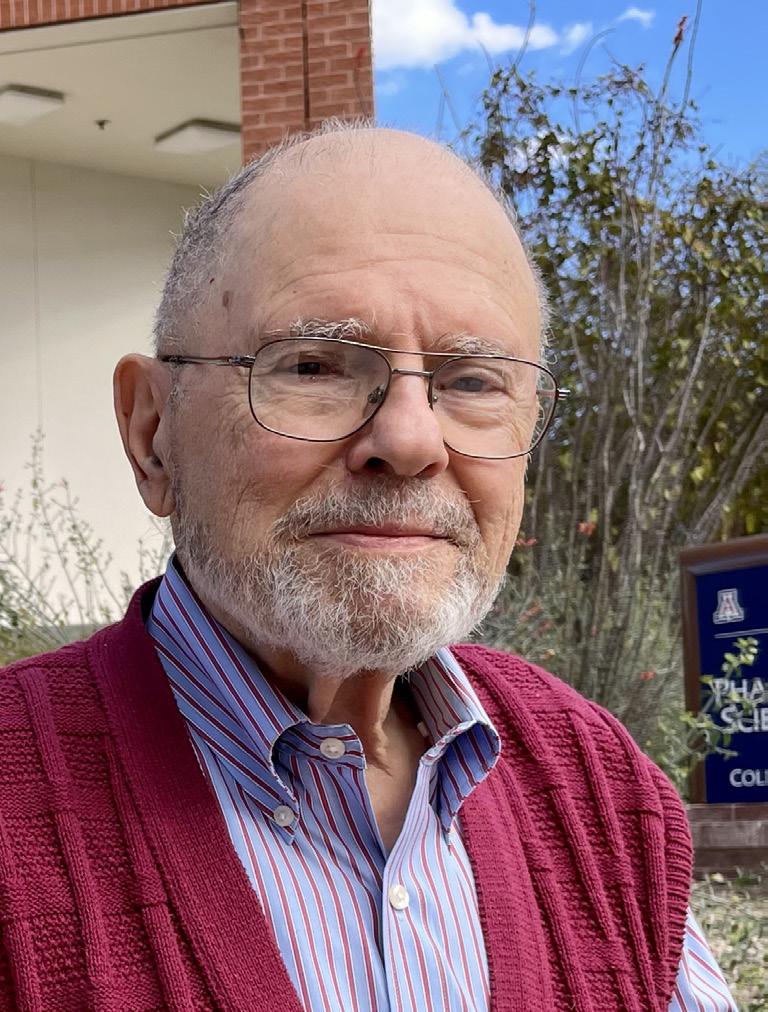
He is perhaps best known for his groundbreaking work in organic compound solubility and his solubilization strategies for dosage form design. “[He] completely changed the way pharmaceutical scientists evaluate the developability of new active pharmaceutical ingredients,” says professor Ken Morris, his former student who is a professor of pharmaceutics at Long Island University.
Yalkowsky credits professor Zografi for encouraging him “to follow my intuition. He allowed me to change my research project and encouraged me in my new research direction,” he says. “I am incredibly grateful to that man. He took a dumb kid and made me a scientist.”
Zografi’s influence remained as Yalkowsky transitioned from the Upjohn Company and the pharmaceutical industry to academics. “When I left my job for a teaching position at the University of Arizona, everyone said, ‘why are you giving up the security of Upjohn and taking a pay cut to teach? I said, If I can get one person to feel about me the way I feel about George Zografi, I would have a great life.”
His students have done well with this guidance. Abu Serajuddin, professor of industrial pharmacy at St. John’s
University, commented, “I hired four of Sam’s Ph.D. graduates from his laboratory as senior scientists for Bristol-Myers Squibb and Novartis. Because of the strength of training in his laboratory, all of them contributed greatly to the successes of these companies.”
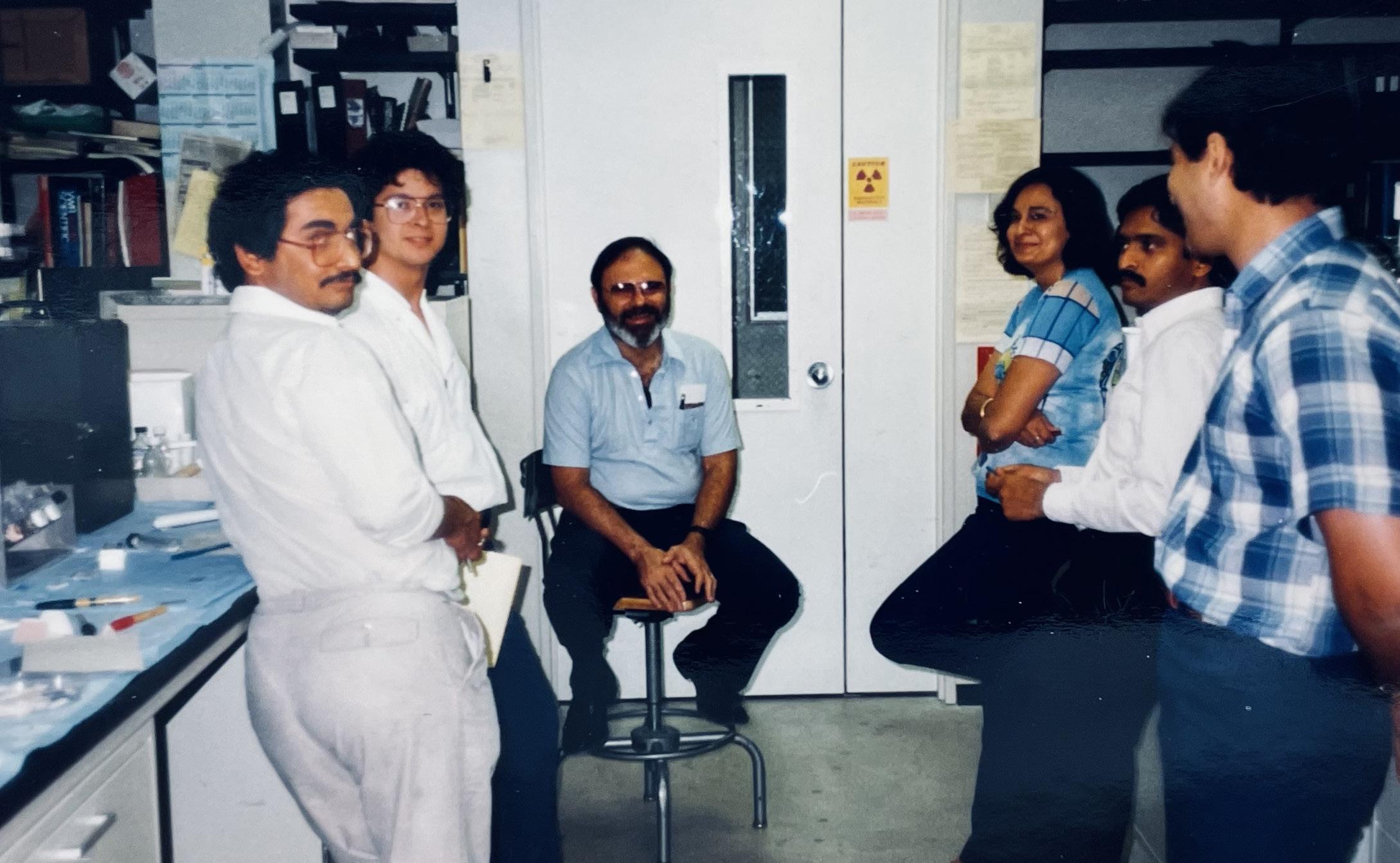
“Many students enter graduate school with the belief that there is one answer to every problem, and that it can be found in the textbook,” Yalkowsky notes. “One of the first things a professor must do is to help the student unlearn much of what they acquired in undergraduate school. Students must be shown how to utilize the knowledge that they acquired in their coursework in a variety of new ways, and they must learn how to create new knowledge.”
Looking back at his life, and the photos of his students scattered around his modest office, Yalkowsky can certainly take pride in having way more than one student feel about him like a father figure, adored teacher, and life-long mentor. He was awarded the University of Arizona Graduate Teaching and Mentoring Award, an honor initiated by graduate students.
But more than awards, it is Yalkowsky’s emotional connection to his students that is unique and resoundingly impressive. He stays connected to his former students and holds “reunions” where they gather, bringing spouses and children, and news of their lives. He keeps in continuing touch and has created an extended family that augments his biological one.
Yalkowsky says his weakness in reading helped him become an astute and adept listener with the ability to listen with his intuition and heart. He has made caring about people in the classroom an essential component of his professional life. “My students are my legacy, along with my daughters and work,” he says.
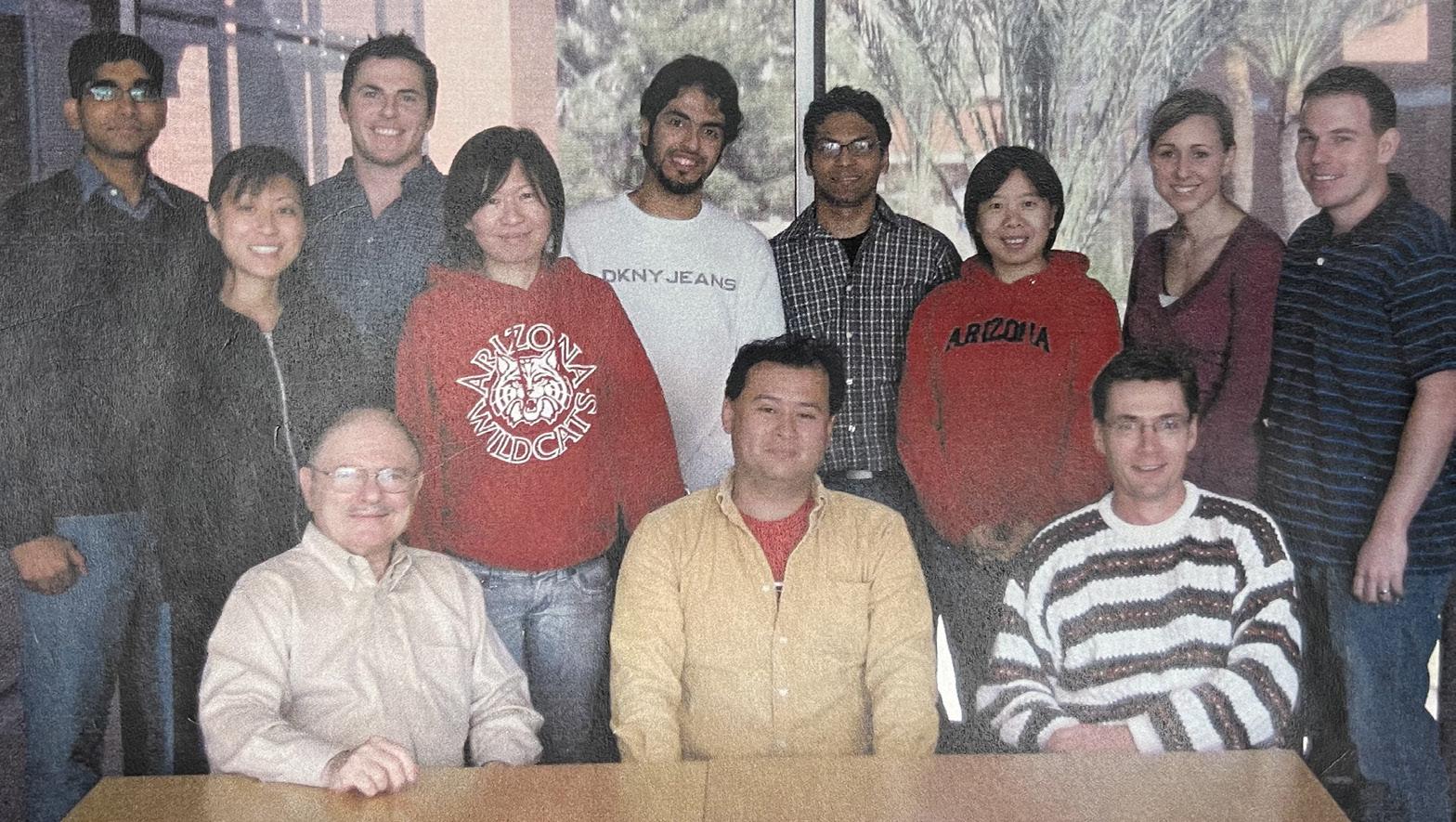
His intellect and findings are unquestionable, but Yalkowsky’s greatest achievement comes from his heart. He listens well from it. It is no wonder that he still goes to work every day.
- With writing by Mark Crawford for the AAPS Newsmagazine.
Keeping Jewish | January 2023 | 5
Professor George Zografi (left), mentor of Professor Samuel Yalkowsky (right)
Professor Samuel Yalkowsky at one of his reunions with alumni
Professor Samuel Yalkowsky in the pharmaceutical lab with students
Judaism and pet ownership
18 frequently asked questions
According to polling data, between 50 and 70 percent of American households have pets. Presumably, this includes Jewish homes as well, which leads us to the question of Jewish law and tradition.

This article will explore some of the most frequently asked questions regarding Judaism and pet ownership.
1. May Jews own pets?
For various cultural reasons, anecdotal evidence suggests that Jewish homes did not often include pet dogs (although cats were more commonly kept, to keep mice at bay).
One reason for this may be that pets are generally non-kosher animals, and there is a preference for seeing kosher images to whatever degree possible.
Thus Orthodox pet ownership is less common, and pet owners in Orthodox neighborhoods may find themselves doing a lot of explaining.
However, there is no Jewish law or tradition precluding pet ownership per se.
2. How about dangerous animals?
By Menachem Posner
It is indeed forbidden to keep dangerous pets, such as a dog that bites (or even one who barks and frightens people), unless they are properly restrained. The Talmud and subsequent texts discuss what allowances may be made for security and what precautions are still necessary.
3. Is it OK to own a pig?
The Talmud tells us that there is an ancient curse placed on anyone who raises pigs. This happened after enemies besieging Jerusalem sent in a pig instead of the usual kosher animals that were allowed into the city to be sacrificed on the altar.
So although pigs make for intelligent and trainable pets, they are not right for Jewish homes.
4. How about neutering or spaying?
The gift of life is sacred. It is written, “... in your land you shall not make” damage to an animal’s reproductive organs. It is, however, OK to purchase an animal that has already been fixed by a non-Jewish vet.
5. Is it true that you need to feed animals before you eat?
In the Shema, we are assured that G-d will
“give grass in the field for your cattle, and you will eat and be sated. From here the sages infer that we, too, must make sure that our animals have food before we sit down to breakfast.
6. How about caring for pets on Shabbat? There are indeed several issues pet owners need to be aware of regarding Shabbat: a. “Trapping” is one of the 39 acts (melachot) forbidden on Shabbat. If your animal is prone to running away, then closing the door or window to prevent its flight may be a form of trapping.
b. It is permitted to walk your animal, provided it is clear that you are walking your dog, not carrying the leash. This is accomplished by keeping the animals close to you, not letting the leash sag to within a handbreadth of the ground, and not letting a handbreadth of leash dangle from your hand. Carrying a bag for waste outside an eruv would also be an issue.
c. A conventional reading of Jewish law puts animals in the category of muktzeh, items that may not be handled on Shabbat. It has been argued, however,
that household pets are not included in the category of muktzah at all, because they have an “immediate practical use.”
7.Anything to know about the firstborn animals?
There is nothing special about firstborn cats, dogs, hamsters, gerbils or goldfish. In the times of the Holy Temple, kosher livestock were donated to a Kohen (priest).
8. Does my animal need to keep kosher? Assuming that you are not preparing your animal’s meals in your kosher kitchen with your kosher dishes, your animal is free to enjoy horse meat or other non-kosher foods.
An exception to this rule would be a cooked mixture of milk and meat, from which we may not benefit and are therefore not even allowed to feed our pets. This applies only to the meat of kosher land species. One may feed their pets milk cooked together with the meat of non-kosher animals or even kosher birds (such as chicken), as well as meat of a kosher animal that has been mixed but not cooked with milk, taking care, of course, not to get it on their kosher dishes.
| January 2023 | Keeping Jewish
JUDAISM 101 6
Photo: Tran Mau Tri Tam / Unsplash
in the firstborn firstborn goldfish. (priest). kosher? your with free to foods. cooked we even only together as well been kosher
9. What can I feed my pets on Passover?

Passover can be tricky, since we may not benefit from chametz on Passover. The ingredients of various animal foods are different, so consult the most recent guides published by your local kosher supervisory agency to find out what’s OK each year. Note that kitniyot (beans, legumes, corn etc.) may be fed to our pets, even by Ashkenazim who do not eat these foods on Passover.
10. Must a Jewish-owned pet fast on Yom Kippur?

We read on Yom Kippur afternoon how Jonah inspired the residents of Ninveh to fast and repent. In that case, as decreed by the king, both people and livestock refrained from eating and drinking. This, however, is not the Jewish way. On Jewish fast days, only Jewish adults (and children who are up to the task) are obligated to fast. This does not include pets.
11. What does Torah say about causing animals pain?
The Torah has several precepts relating to not causing animals unnecessary pain (tza’ar baalei chaim), including the requirement to assist a struggling pack animal.
Now, when there is reasonable purpose for humans, Judaism does allow causing an animal discomfort. Thus, we slaughter animals to eat their meat, use their hides, and other purposes. However, plucking feathers from a living goose is sadistic and forbidden, even though those feathers will be used, since you can easily obtain feathers from animals that are no longer alive.
12. May we put our elderly pets to sleep?
Since ending the life of an animal is permitted and causing pain to an animal is forbidden, euthenasia is a fine, humane option to consider when an animal is nearing the end of its life and is suffering.
13. Do pets go to heaven?
On a most simple level, heaven is a reward for good behavior and compensation for suffering endured here on earth. Since the Middle Ages, the Jewish sages have debated whether reward and punishment apply to animals. Since no one on our staff
can recall going to heaven and back, we cannot tell you for certain whether there is a doggie kennel there.
14. Is there a Jewish tradition about animal funerals?
Judaism records an instance of animals themselves burying their dead. After Cain killed Abel, he wondered what to do with the body. Observing birds burying a fellow bird, he decided to do the same.
However, the mitzvah to bury the dead is unique to humans. As G-d told Adam, “For dust you are, and to dust you shall return.”
It stands to reason that this is unique to humans, whom G-d fashioned from dust.
15. What to say when a pet dies?
When a person’s animal dies, the proper response is hamakom yemale lecha chisronecha, “May the Omnipresent fill your void.”
16. Can I say Kaddish for my departed pet?
Our pets are a major part of our lives. However, there is no precedent in Jewish tradition for saying Kaddish for our pets.
17. Can my (well-behaved) pet come to shul?
Synagogues are a place for people to pray and a pet may cause a distraction for fellow congregants, so better not. (See below regarding support animals).
18. How about bringing service animals to services?

In the mid-20th century, debate broke out regarding the permissibility of blind people bringing service dogs into the sanctuary. Rabbi Moshe Feinstein, a preeminent halachic authority in the US, allowed it, and Rabbi Menachem Kasher, a scholar in Israel, prohibited it. The Rebbe, Rabbi Menachem M. Schneerson, argued that they should surely be allowed, as facilitating synagogue attendance for people with disabilities is a worthy cause, and leniencies should be sought.
- Rabbi Menachem Posner serves as staff editor at Chabad.org, the world’s largest Jewish informational website. References for this article are at Chabad.org/5291109

Keeping Jewish | January 2023 |
7
Mazel Tov On The Sale of Your Home Wishing You Much Happiness In Your New Community We Will Miss You Madeline Friedman Vice President, ABR, CRS, GRI 5 520.907.4141 TucsonHomeFinder@aol.com www.TucsonAZHomes.com
Malcolm & Amy Levin
Welcome to town: Anat Balint
Dr. Anat Balint was born and raised in Jerusalem, the youngest daughter of three children born to Holocaust survivors. She started her journalistic career at the age of 17, writing for the Israel Broadcasting Service, Kol Yisrael. She has written for Israel’s longest-running newspaper Haaretz and was a television editor and producer.

A media scholar who specializes in the political economy of the media and the politics of Israeli media, Balint received her Ph.D. in Media and Communication from the University of London. She was an adjunct lecturer in the Department of Communication at Tel Aviv University. Balint was an Israel Institute Visiting Scholar and Coordinator of the Jewish Studies Program at San Jose State University and is currently an Assistant Professor and inaugural Jeffrey B. Plevan Chair in Modern Israel Studies at the Arizona Center for Judaic Studies of the University of Arizona.
Moving to Tucson:
We moved to Tucson 4 months ago from San Francisco and we love every moment here, especially once it got cooler. We find people to be very welcoming, open and easygoing.
Currently reading/learning:
By Benjamin Weiss
“Karl Marx: Philosophy and Revolution,” by Shlomo Avineri exploring Marx’s Jewish identity.
Favorite Mitzvah/holiday: Helping the weak ones in society indiscriminately of their identity.
Cherished Jewish memory: Celebrating Passover night with the tiny Jewish community in East Berlin just a few months before the fall of the wall in 1989.
Jewish app on phone: Whatsapp. Jewish people love to chat and connect!
Go-to Yiddish or Hebrew word: Ma Nishma in Hebrew, which means what’s up as a casual way to start a conversation.
Another phrase is Mitzvah tantz in Yiddish. It commonly means the men’s dance before a bride at a Chassidic wedding, but my father would use it to
describe doing something for the sake of the good deed (such as going to a wedding when you’d rather stay at home or dancing with someone to make them feel better).
Historical Jewish figure: Haviva Reik. She was one of the 3 women in the group of 32 Jewish parachutists sent from British Mandatory Palestine to Nazioccupied Europe to help British intelligence efforts and save the lives of Jews during the Holocaust. She landed in her homeland Slovakia and helped support the Jewish refugees. She was caught by the Nazis and murdered in the Kremnicka Massacre. After the war, her remains were found, and she was buried in Israel.
Chabad:
I know it as a hub for Israelis when they travel abroad.
My girls, my partner, writing, yoga.
Hobbies: Yoga. It is much more than a hobby for me. More like a mode of being.
Comfort food: Tomatoes 3 times a day (I am an Israeli). And chocolate, in times of need.
Kvetch: The rise of populism in the world, the United States and Israel included.
Kvell: Listening to my girls’ insights about the world.
Tzedakah:
I currently support the Israeli NGO “Not Standing Aside” (Lo Omdot Mineged), which supports women who are being exploited and used in human trafficking.
Happiness:
Your claim to fame: Israeli salad and some things I wrote that made a difference.
Something you’re looking forward to: Having a dog, maybe in the future. I love pets.
| January 2023 | Keeping Jewish 8
for me. Israeli). that love
Bubby’s lokshen kugel
By Feigie Ceitlin
INGREDIENTS:

1 package of egg noodles, cooked and drained
2 medium zucchini, shredded
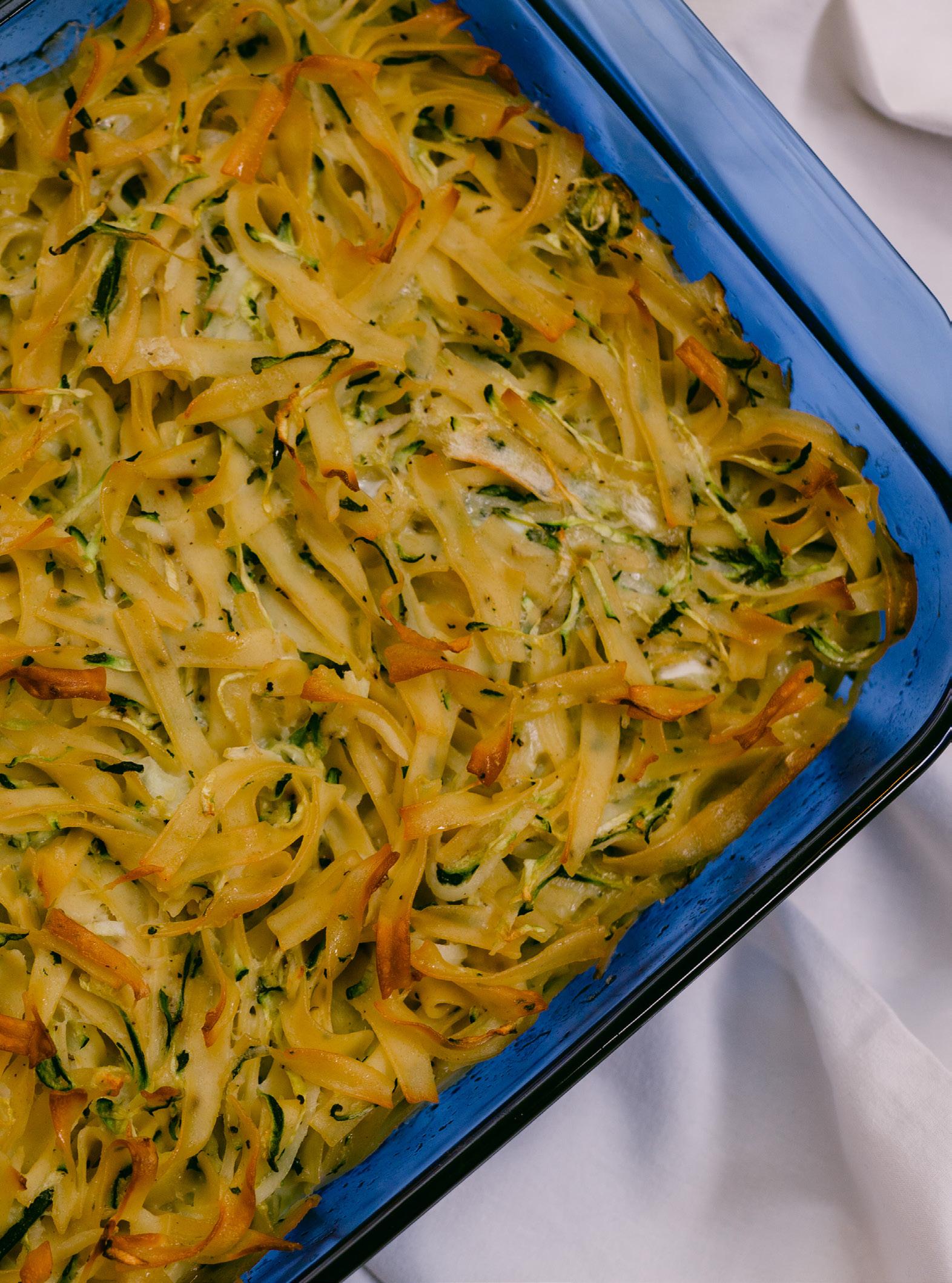
1 shredded potato
1 shredded onion
4 eggs
¼ c oil
Salt Pepper
DIRECTIONS:
Mix all of the ingredients in a bowl and transfer to a greased baking pan.
Bake at 375 degrees for 45 minutes.
Note: Cooking times are dependent on the oven so make sure the top is crispy before removing from the oven.
* The blessing:
Baruch atah A-donay, Elo-heinu Melech Ha’Olam shehakol nihiyah bed’varo.
Blessed are You, L-rd our G-d, King of the universe, by Whose word all things came to be.
Enjoy!
— Feigie Ceitlin is the program director of Chabad Tucson.


Keeping Jewish | January 2023 | KOSHER
9
Photo by Jacqueline Soffer Studio
Photo by RODNAE Productions
Crummy cheesecake and a crumbling marriage
By Jenny Shain
Jody’s husband, Ari, came home from a business meeting and happily announced that he had brought her a treat: some cheesecake. She thought this was a little unusual but sweet of him and went to open the fridge. There she found a see-through container with the very small, sunken remains of a piece of cheesecake. Strange, weird, funny, yet also vaguely insulting, even hurtful.
This was the gift? She picked it up, looked at it from a few angles, and, trying to be lighthearted, said to him that it wasn’t the kind of gift she appreciated; in fact, it wasn’t great or sweet of him at all. He looked at it and agreed that it wasn’t amazing—OK, his friend had taken some of it, and yes, it had collapsed in a little heap, but he still had thought of her and
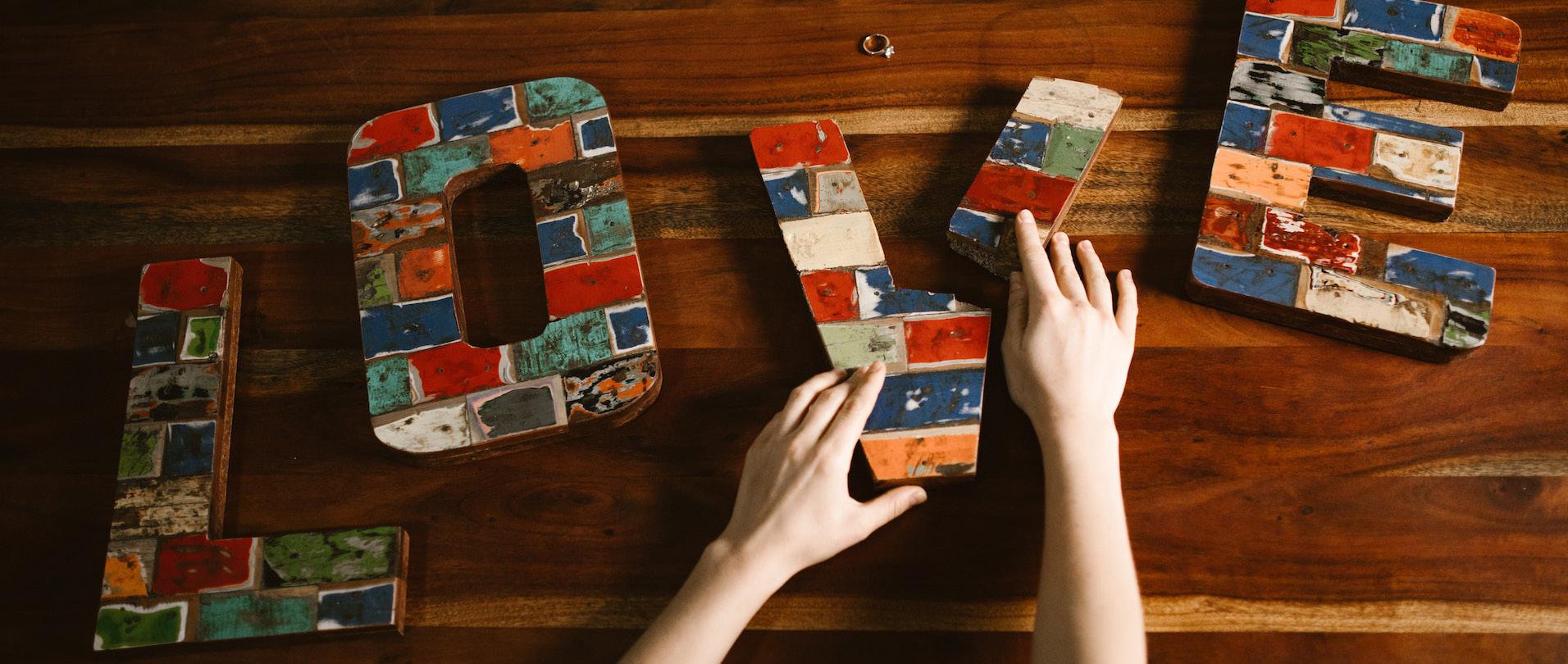
brought her something; his intentions were good.
She kept quiet, not wanting to make a fuss and feeling silly to bring it up as an issue, knowing that Ari would anyway be annoyed, defensive and dismissive. This was their way. Marriage researcher John Gottman would call them a “conflictavoidant” couple. They had respect, humor, and companionship; they worked well together as a team and didn’t fight; they were a solid couple, but something fundamental was missing.
Later that day, Jody was speaking to a dear friend on the phone—someone she could and sometimes needed to confide in. Jody told her friend Lynne about the cheesecake, apologizing for being petty.
She described what had happened and said that it wasn’t really about the dessert; she felt that this annoying piece of cheesecake was symbolic of her relationship with Ari.
Jody said she knew that he cared about her and the kids, but she felt that his work and business meetings came first, and that she (and the family), got the “crumbs,” the leftovers of his time, energy and attention. Yes, he did think about her, but in a distracted, half-hearted way. This had become the flavor of their relationship. She told Lynne that she was probably at fault for not sharing more with him, but whenever trying, he didn’t listen attentively. She found it really hard to talk to anyone who wasn’t tuned in. Sadly, she had accepted that this was the status quo, and after all, it wasn’t so terrible.
Unbeknownst to Jody, Ari was at home and had heard the entire conversation! Ouch!
He left the house and messaged her, “I’m sad that that’s how you see us.”
She answered, “Yes, it is sad.”
He returned home later, angry and hurt. “I feel betrayed,” he told her. “How can you talk behind my back like that? With Lynne, it always has to be negative, the darkest view; you lose perspective and don’t see the good. I support you and the family ... what about all that?”
“That’s not altogether true; I don’t see only bad. I’m sorry you got hurt. I didn’t intend for you to hear that conversation. I didn’t know you were home, but I am entitled to
| January 2023 | Keeping Jewish
LIFE
It felt like a time long ago, when they used to share, talk and listen
10
talk to who I want to, and to express what I truly feel and to be heard.”
“So, it’s a facade when we’re getting on well? Things seem OK, but they’re really not?”
“I guess you’re right,” I agreed. “There is a kind of facade going on.”
“So why don’t you tell me? I ask how you’re doing, and you say fine. You don’t talk.”
“I sometimes try, but you’re not present; your phone is your main companion. I’d rather talk to people who are really interested in me. Either you’re not listening, or you get angry and defensive.”
Jody felt bad for talking about Ari and being so harsh. But this was the most honest conversation they’d had in ... who knows how long? Ari’s overhearing Jody talking to Lynne was a clear, unadulterated version of her truth—very painful, but also very real, expressing what was really going on, which he hardly ever heard or even thought about. He was generally too busy, and also quite used to taking up
the space and time to talk about what he needed. Ari was the “maximizer”—the loud, talkative one who jumped in, eager to be heard—while Jody was the “minimizer,” comfortable with listening and not inclined to fight for attention.
Thus, the pattern had continued and solidified over time. A pattern that worked and went with the natural flow of their personalities, but which truly was emotionally disconnected. For such a dynamic to change, both partners would have to work against their natural predispositions.
Ari would need to focus his attention away from his phone and himself to be present to see, hear and be interested in Jody—to be prepared to ask questions to draw her out to show that he really did want to hear the answers. Jody would have to stop only listening and being present, which was natural and easy for her, and move towards taking more of the space, sharing, admitting to feelings that were uncomfortable and confronting issues between them that were easier left untouched.
The Torah teaches that “man shall leave his father and mother and cling to his wife and become one flesh” (Genesis 2:24). Rabbi Samson Raphael Hirsch explained that this can happen only if they become one mind, one heart, one soul, and if they subordinate all their strength and effort to the service of G‑d.
Among the many ways of serving G‑d together is the direct effort of working on one’s relationship: together! Therefore, intimacy in marriage is not just a wonderful state to strive towards in order to feel good and to give to each other, but it is a mitzvah, a commandment, something G‑d expects of us. Going against one’s natural path in order to create unity and understanding is a fulfillment of becoming one flesh, and is part of a bigger purpose we are expected to achieve.

Later that evening, after Ari came home, he was still feeling bruised, but calmer and still open to listening. He asked Jody if she’d had any thoughts. She said yes; she thought she needed to be more honest, and open up more about what she was really feeling and what was going on in her life.
They spoke for a while before drifting off to sleep.
It felt like a time long ago, when they used to share, talk and listen. So basic, so easy, but for them, it had become such a mountain—such a solid block built over many days, weeks and years. A block of wood, stone, concrete, ice? It would be hard to chip away at; it would take consciousness, work, consistency, courage, effort and commitment to go against a comfortable, established pattern.
Is this what renewing vows was all about? Emerging was a kernel of fragile, tentative hope—maybe things could be subtly but monumentally different. A way forward to intimacy and connection that could just as easily or more easily not be.
- Jenny Shain has over 20 years of experience as a social worker. She made Aliyah to Israel in 2013, where she lives with her husband, children and grandchildren.

Keeping Jewish | January 2023 | 11
Hebron Purim
By Yerachmiel Tilles
The Jewish holiday of Purim occurs during the Hebrew month of Adar, but it has not been the only “Purim” that Jews have celebrated. Over the years, similar celebratory days have been established by Jewish communities to commemorate their deliverance from destruction, catastrophe, or an antisemitic threat. Such days are called Purim Sheni (Second Purim).
While Second Purims are no longer observed, they are remembered on the Jewish calendar. Here is the story behind one of them:
When Spain expelled all of its Jews during the Inquisition, a group of exiles went to settle in the city of Hebron in the holy land of Israel. An Ottoman Pasha who hated Jews governed that city. He constantly sought ways to persecute his Jewish subjects and extort money from them. One winter day, the despotic governor summoned the leaders of the Jewish community. When they stood before him, he barked gruffly, “I am imposing a tax of 100,000 gold shekels upon you. The sum must be brought to me by the end of this month.”

The Jewish leaders felt their hearts sink. With faltering voices, they managed to say, “Where are we to come up with such a huge sum, Your Excellency?”
“That is your business, not mine. If the money is not produced within thirty days you will all be killed.”
With heads bowed, the leaders returned to report the outcome of this meeting to the community. Since the demand was outrageously impossible, for they were all poor, the Jews turned to prayer and fasting. Every day they would congregate in their synagogue, where they wept and prayed to G‑d, the only one who could help them out of the mortal danger that they faced.
The days crawled by, and the deadline approached. But, the Jews were far from the required sum. They knew that only a miracle could help them.
On the day before the time was to elapse, the leaders decided to visit the Ma’arat HaMachpelah burial cave in their city. According to tradition, buried at the Cave of Machpelah are Adam and Eve, Abraham and Sarah, Isaac and Rebecca, and Jacob and Leah. They planned to petition them to beseech the Heavens on their behalf. They would do this by means of a prayer request on a note (“pidyon”). They realized this was their last and only hope.
In those days, Muslims forbade Jews from entering the tomb. This was part of the oppression and persecution which they suffered at the hands of the cruel governor. How, then, were they to deliver their note? They asked to bribe the watchman at the gate to throw in their note through a window. For a considerable sum of money, he swore “by the beard of his prophet” that he would attend to the matter without delay.
That night, the governor was unable to sleep, stimulated by the wealth he might yet receive from the Jews the next day. Suddenly, three figures appeared before him. Three old men with flowing white beards and glowing faces. “If your life is dear to you,” they warned him, “give us at once the very sum that you are demanding from the Jewish community.”
He looked around him, but there was no one to come to his aid. Gripped by an abysmal fear, he scrambled out of bed and opened up his vault. His trembling fingers counted out 100,000 gold shekels. He placed this in a large metal chest and thrust it at the men, begging them not to harm him. As soon as they had the money, they disappeared. And the governor suddenly relieved of his terrible fear, fell asleep at once and promptly forgot all about the money, dismissing the episode as a dream.
The next morning, the governor sent his soldiers to the Jewish community. A unit of armed men, their swords already unsheathed, descended upon the synagogue, where they found everyone
| January 2023 | Keeping Jewish
12
HISTORY
The Cave of Machpelah in Hebron between 1950 and 1977 * Photo: Matson Collection / Library of Congress
Only a miracle could save the Jewish community from a cruel Ottoman Pasha
huddled together. They demanded the money.
Shivering and terror-stricken, the people stood helplessly by. Then, one man noticed a chest in the corner of the sanctuary. Unable to speak from sheer fright, he pointed to it with his finger. The soldiers approached the chest and opened it. They found a treasure of golden coins. Counting them, they discovered that it contained the required sum of one hundred thousand gold coins. They gathered it up and left, their heavy boots thundering in the silence of the large stone building.

The Jews heaved a sigh of relief. A miracle had indeed taken place.


When the chest was placed before the governor, he recognized it as his own and recalled the episode of the previous night. It was his turn to tremble with fear and awe. He summoned the heads of the Jewish community and told them what had happened.
“I believe holy fathers Abraham, Isaac and Jacob rose from their graves in the Cave of Machpelah and brought this money to you. I saw them in my dream. I beg you now to forgive me for my evil intentions. Pray for me, and I promise I will never again attempt to do you harm in any way. As for the money, take it; I don’t want it.” He was afraid to touch the money or the chest, lest a curse fall on him.
The Sephardic Jewish community of Hebron celebrated the great miracle and established that day, the 14th of Tevet, as a festival (this year, on Shabbos, January 7). They named the day “Purim Hebron,” but
the day also came to be known as “Window Purim” in remembrance of the window in the tomb which had brought them miraculous salvation.
The Cave of Machpelah has been freed and is now under Israel’s control. It is a miracle that today, people of all faiths can
enter the building above the cave where it is possible to see the “window” in the first room, where the tombstones of Isaac and Rebecca are. The grated “window” marks the sealed entrance to the cave. Muslims have year-round access, while Jews can now pray there on specific days throughout the year.
- Yerachmiel Tilles is the co-founder of Ascent of Safed, and was its educational director for 18 years. He is a storyteller, columnist and author of “Saturday Night, Full Moon.” Parts of this story were based on the writings of Rabbi Dr. Nissan Mindel in Talks & Tales.
Keeping Jewish | January 2023 |
13
The Tomb of Isaac at the Cave of Machpelah in Hebron, January 1911 * Photo: C. Raad / Northern British-Israel Review
HUMOR
Going gray
By Mordechai Schmutter
A few months ago, I noticed how I’ve been getting older recently. (I haven’t always been getting older. This is a recent thing.) A lot of the things I noticed were doctorrelated. And that is why I think I might need to get a bigger yarmulke. Not that I’m getting more religious. It’s because I noticed that the hairs under it are going grey.
I don’t think the yarmulka’s what’s making them grey.
I say this because I’ve been wearing yarmulkas all my life and some of them have actually been grey (though they didn’t start off that way) and this is the first time this has happened. Is this how it works? If I exclusively wear black yarmulkas, will it go back? What if I wear navy blue yarmulkas? And why am I wearing yarmulkas with a dye that runs?
But I’m getting grey hairs, especially under my yarmulke. I’ve been noticing it for a couple of years whenever I looked in the bathroom mirror, but for a long time, I thought, “Okay, it’s something about the lighting. The light is bouncing off my hair and making it look silver.” But then it occurred to me that if the light is bouncing off of it, it IS silver. Light doesn’t bounce off dark colors.
This whole grey situation gets more noticeable when I let my hair grow long. Problem is that I’m not crazy about haircuts, because I don’t like how I look with short hair. I look like a potato. And not even a good one. I look like the kind where people stick comical facial features into holes, and there’s a door on the back of my head where you keep the facial features you don’t have room for on the front of the face. And sometimes I have a mustache, but sometimes I don’t. Sometimes it doubles as eyebrows.
Sure, people come over to me and say, “Nice haircut,” as if I’m the one who gave myself the haircut, but that’s usually about a week and a half after I actually get it, because that’s how long it takes for me to stop looking like a potato. And then a week later, it’s too long and grey again, because my hair grows back fast, Thank G-d. But at least it’s happening slowly. I know people who one Shabbos you see them and they’re all black, and the next Shabbos, their hair is white.
“Wait, didn’t I see you just last week?”
“Yeah! Why?”
“Well, uh, what have you been up to since then?”
“Well, I started my own business...”
Of course, everyone goes grey eventually. Sure, I can say that my kids are turning me grey, and my deadlines are turning me grey, and my students who call me “Schmutter” are turning me grey, but you can have no kids and no job and no students who call you “Schmutter” and still turn grey. Maybe slower, though. The only way for a hair not to turn grey is if it falls out. It has to abandon ship. So it’s not the problem; you’re the problem.
Though if you think about it, turning grey doesn’t affect your life, really. It’s not like the sooner you turn gray, the sooner your teeth fall out.
Well, actually, it does change your life, because there’s always other people’s perception of you. For example, if someone with grey hair dies, the world at large accepts it. “Eh, he should have thought of that before he got old.” But if someone with black hair dies, everyone’s like, “Oy vey! He was so young!” So basically, you want people to be sad if you die.
Orthodox Jewish women are lucky. They get to hide it. Technically, as I said, I can hide it too, but people will definitely ask me why I’m starting to wear bigger and bigger yarmulkas. (Plural.) Though I won’t be able to hear them, because they’ll be covering my ears. Nor will I be able to see them. But women get to wear wigs (sheitels). True, I can get a toupee, but I don’t think that will get people to stop talking. Especially when I remove it in the synagogue every morning before I put on tefillin.
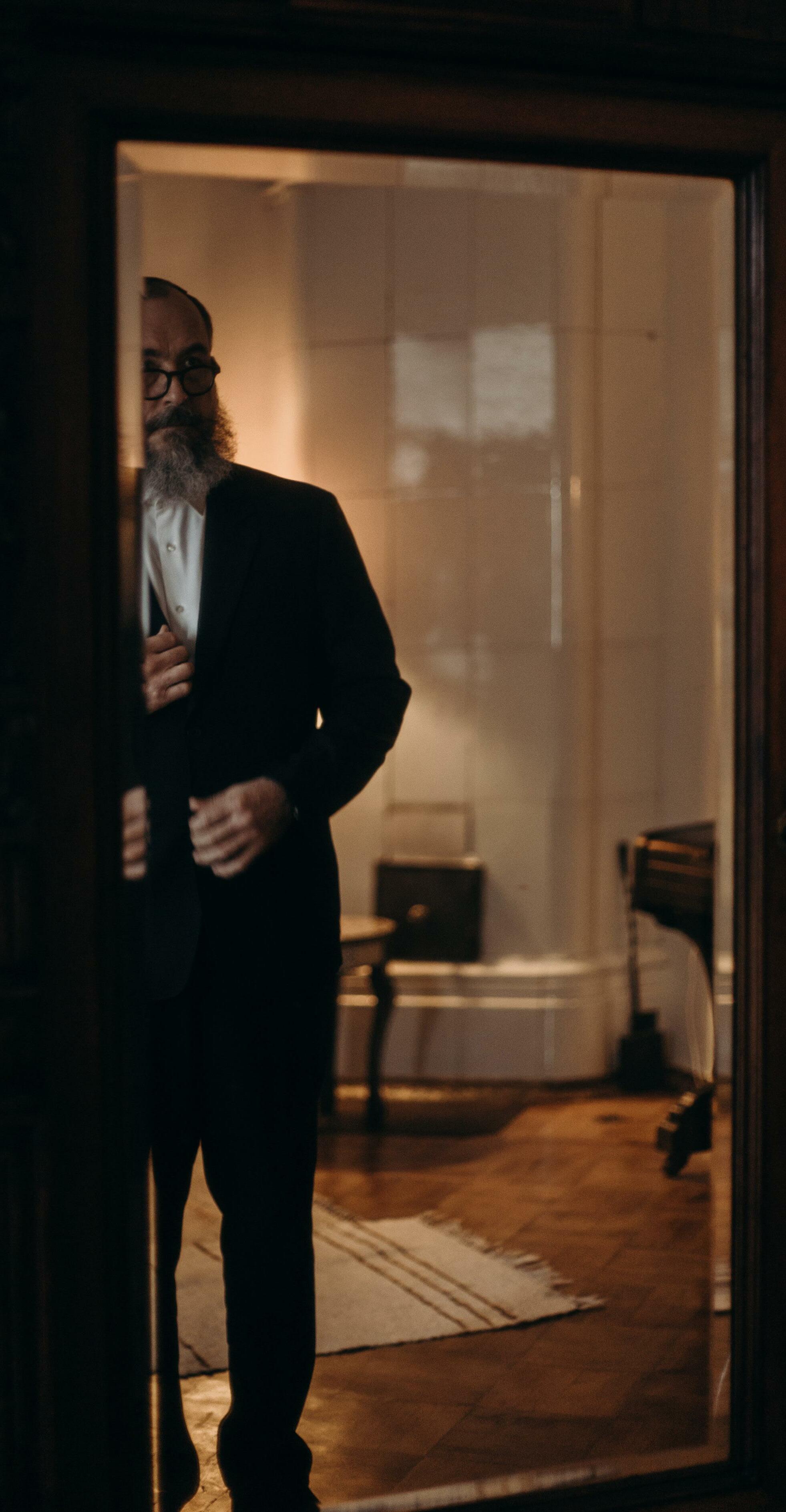
But bigger headgear won’t help me, because I also have hair growing out of other places on my head. Sometimes I feel like it’s trying to reach out and touch people. Or lean towards the sunlight. I can’t wear a yarmulke that goes 360 degrees around my head and covers my ears and nose, can I?
Maybe a turtleneck.
| January 2023 | Keeping Jewish
14
Photo by Cotton Bro
since and still only falls the grey like your someone thought of with want ask me bigger be able them. But rue, I will when morning touch
Take the Tzedakah quiz
By Menachem Posner
1. What is tzedakah?
Charity Home Insurance
An ancient form of payment
The last letter of the Hebrew alphabet
2. What does tzedakah actually mean?
Kindness
Justice Sharing Coins
3. What is a pushke?
A cart filled with bread and milk for the indigent
A roving alms collector
A tzedakah collection box Yiddish for “spare change”
4. Name a time when it is customary to give tzedakah After eating At noon Before praying At midnight
5. True or false: Ideally, the recipient should know the identity of the benefactor True False
6. When should tzedakah be given before
Shabbat? After candle-lighting Before candle-lighting Any time after the challah has been baked When the sun begins its descent
7. How often should one give tzedakah? At least once a day No more than twice a week Whenever they see a beautiful scene Monthly or biweekly
8. What is maaser? A person who does not give tzedakah 10%, which each person should give from their income
A small rodent, which eats tzedakah coins 20%, which each person should give from their income
9. Proverbs says, “Tzedakah saves one from ______”?
Death Bulging pockets Sin Old age
10. What is a meshulach?
A story about tzedakah
The plug on the bottom of a pushke
A weekly giving ledger
A tzedakah collector
Answers: 1. Charity / 2. Justice / 3. Collection box / 4. Before praying / 5. False / 6. Before candle lighting / 7. At least once a day / 8. 10% / 9. Death / 10. Tzedakah collector

Keeping Jewish | January 2023 |
15
FUN PAGE
Photo: Eliran T
Meet the Torah's bestsellers, and learn how they gained their titles


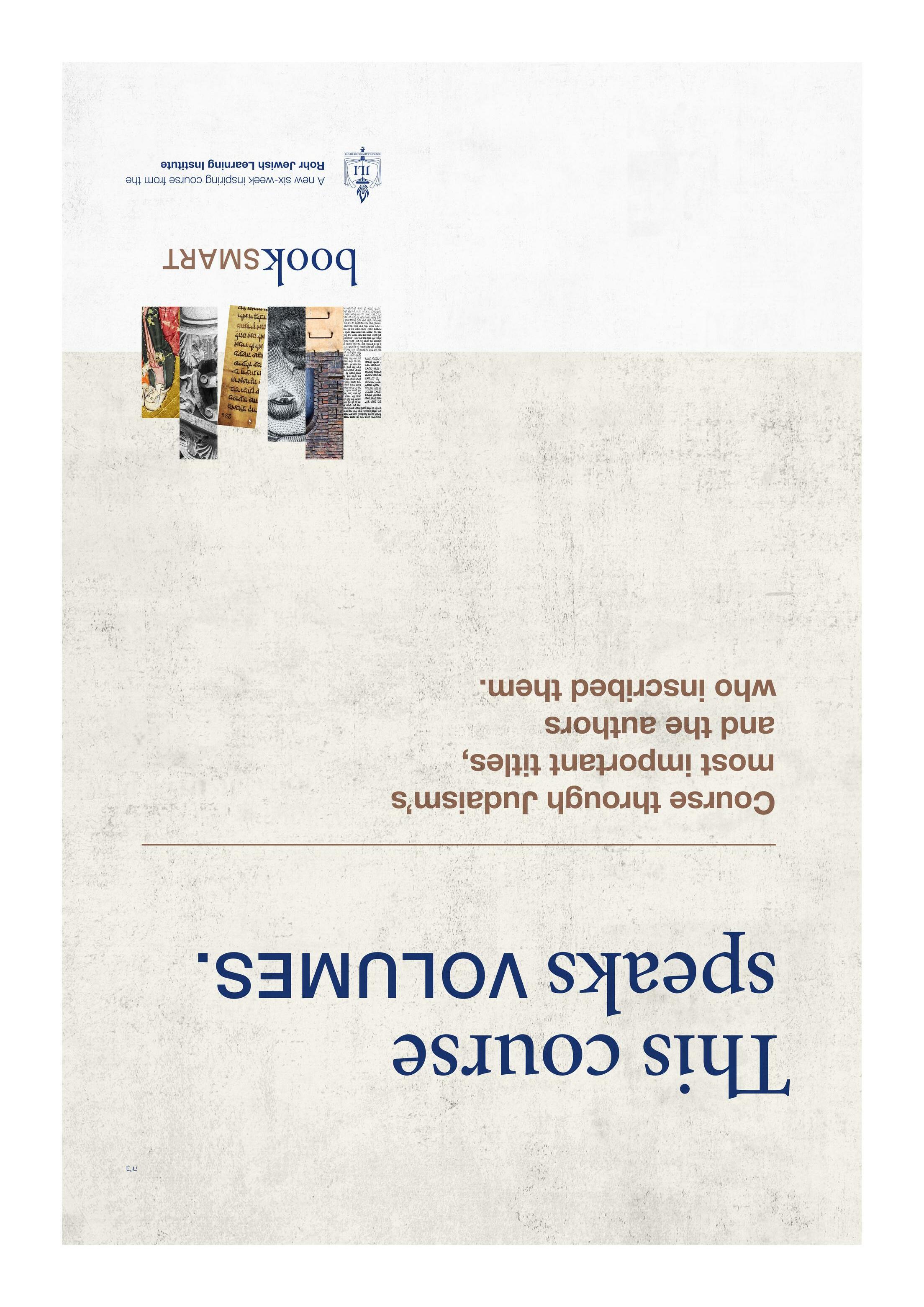

BH








































